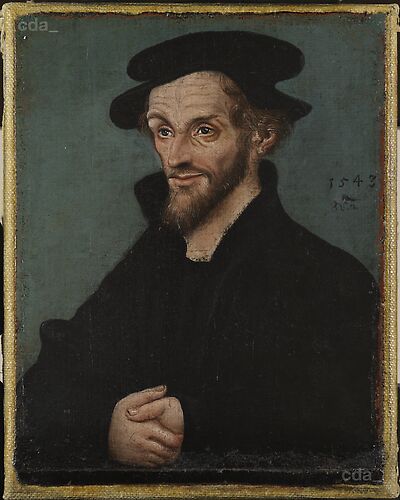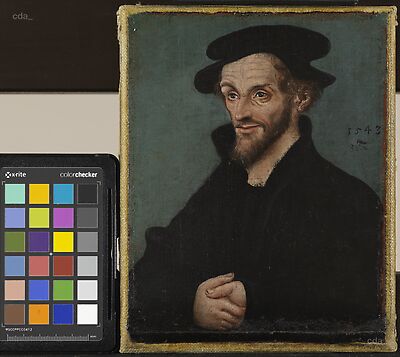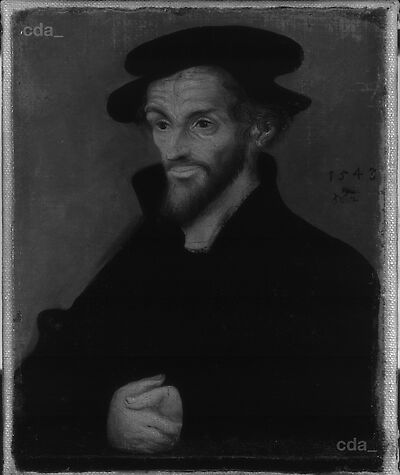- Attribution
- Copy after Lucas Cranach the Elder
Attribution
| Copy after Lucas Cranach the Elder | [cda 2022] [Kurpfälzisches Museum Heidelberg, revised 2022] |
- Production date
- after 1543
Production date
| after 1543 | probably 18th or 19th century [Kurpfälzisches Museum Heidelberg, revised 2022] |
- Dimensions
- Dimensions of support: 21.7 × 17.3 cm
Dimensions
Dimensions of support: 21.7 × 17.3 cm
Dimensions including frame: 25.8 × 22.3 × 3.2 cm
[Kurpfälzisches Museum Heidelberg, revised 2022]
- Signature / Dating
Artist's insignia at the right edge: serpent with wings and dated '1543', in black paint (not genuine)
Signature / Dating
Artist's insignia at the right edge: serpent with wings and dated '1543', in black paint (not genuine)
- Inscriptions and Labels
on the reverse: - top stretcher member, centre, paper label (4.4 x 7.0 cm), brown ink, quill, handwritten in …
Inscriptions and Labels
Stamps, Seals, Labels:
on the reverse: - top stretcher member, centre, paper label (4.4 x 7.0 cm), brown ink, quill, handwritten in Old German (altdeutsche Schrift): 'Samlung v. Graimberg / Melanchton'
- at the right, black pen (ballpoint pen?), capitals: 'G 69'
- left stretcher member, bottom, vertical, stamp, blue ink (?), type face facing outwards: 'KURPFÄLZISCHES MUSEUM / DER STADT HEIDELBERG'
- bottom stretcher member, centre, black ballpoint pen (?), capitals: 'G 69 Cranach-Werkstatt / Philipp Melanchton'
- below at the centr, paper label (1.5 x 5.5 cm), brown ink, quill, handwritten in Old German (altdeutsche Schrift): '614 / pour la galerie'
- canvas, centre, stamp, blue ink (?): 'KURPFÄLZISCHES MUSEUM / DER STADT HEIDELBERG'
- below: black felt tip pen (?), capitals: 'G 69'
[Kurpfälzisches Museum Heidelberg, revised 2022]
- Owner
- Kurpfälzisches Museum Heidelberg
- Repository
- Universitätsmuseum, Heidelberg
- Location
- Heidelberg
- CDA ID
- DE_KMH_G-0069
- FR (1978) Nr.
- FR-none
- Persistent Link
- https://lucascranach.org/en/DE_KMH_G-0069/



